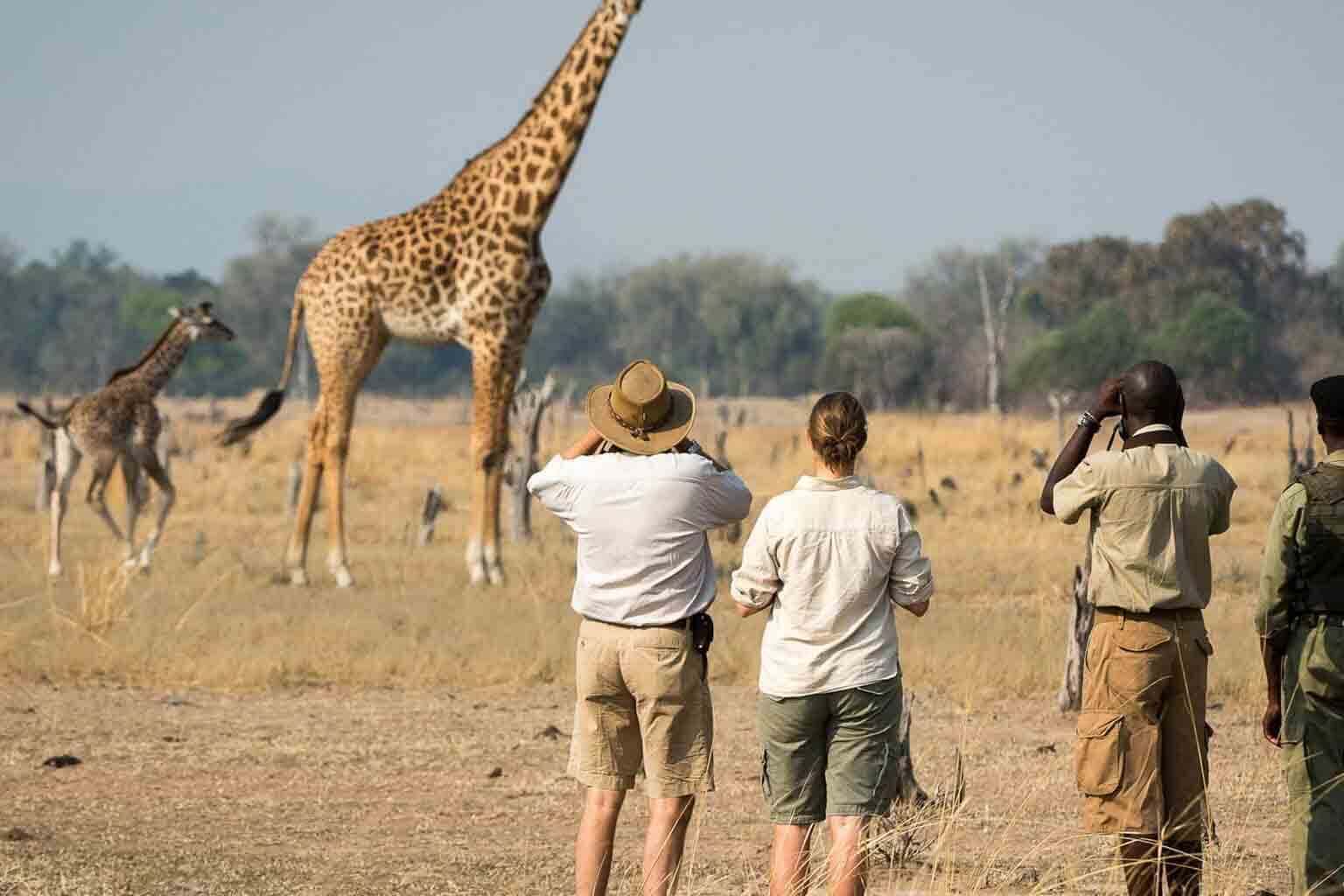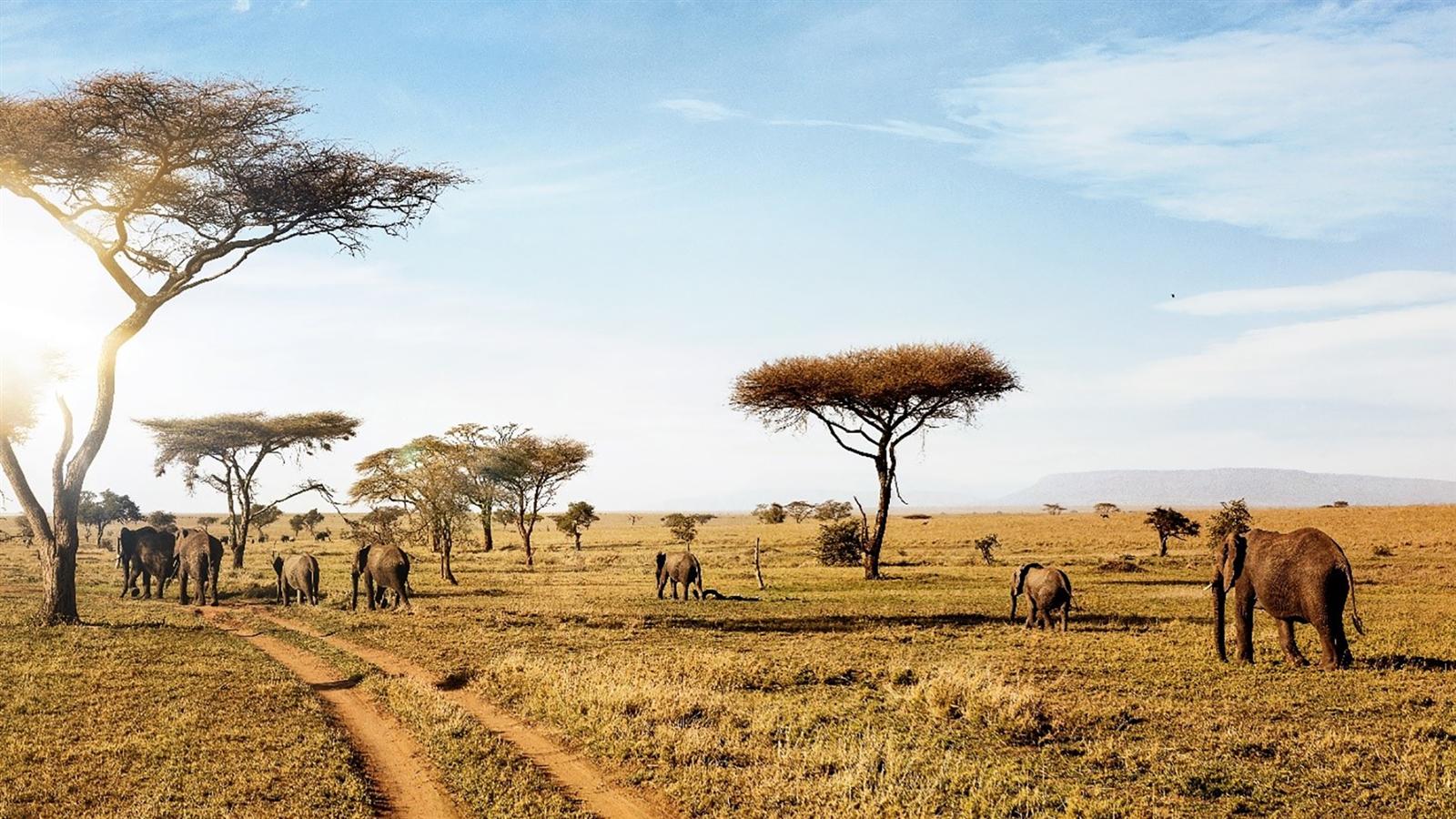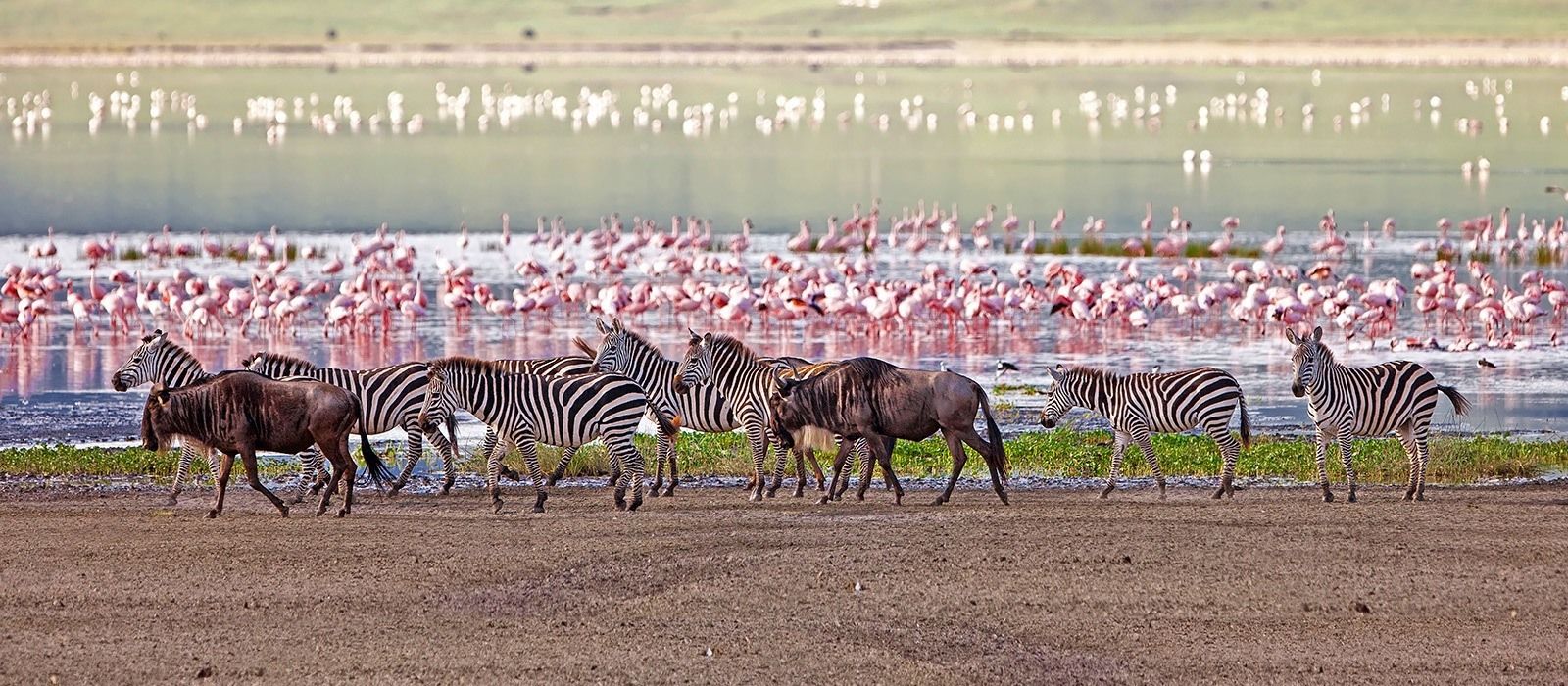Northern Tanzania Destinations
Tanzania Overview
Possibly east africa's most relaxed nation, tanzania is home to the vast serengeti, mount kilimanjaro, zanzibar and a host of beautiful lesser-known parks.
With a diverse range of cultures and wildlife, and you will experience some of the most magnificant views and hospitality on the planet. Karibu!
Arusha National Park

The closest national park to Arusha town northern Tanzania's safari capital Arusha National Park is the pocket-rocket of parks offering the opportunity to explore a captivating diversity of habitats within a few hours.
The park, near to Moshi and Arusha, is an ideal day trip destination, even for visitors who are attending seminars, workshops or business in these two towns. Unlike any other national park in Tanzania, here visitors can see a variety of wildlife in different habitats in a very short time. Its diverse beauty which includes scrubland, forest, lakes, craters, ash cone and Mount Meru, which dominates the park's horizon.
With wildlife that includes herbivores such as hippos, buffalo, zebra, and even the occasional wildebeest and elephant, Arusha National Park is also a perfect place to get out and stretch your legs, with both walking safaris and canoe safaris available within the park. You can also climb Mount Meru, Tanzania's second-highest peak, while exploring the surrounds of the park.
Arusha National Park is home to the world's largest population of giraffes, making it a great place to visit for fans of these elegant creatures. The location is also a refuge for primates including the acrobatic black-and-white colobus monkey, blue monkeys and baboons.
At just 552 square kilometres, it's a small park with a lot to see.
Best Time Of The Year To Visit
The best time to visit Arusha National Park is during the dry season from July-November, or after the short rains from December-March.
To climb Mount Meru: June-February although it may rain in November.
Best views of Kilimanjaro: December - February.
Serengeti National Park

Serengeti National Park is a renowned wildlife conservation area located in the northern part of Tanzania, East Africa. It is one of the most famous and oldest national parks on the continent. Established in 1951, the park covers an area of approximately 14,750 square kilometers (5,700 square miles) and is part of the larger Serengeti ecosystem that also includes the Ngorongoro Conservation Area, Maswa Game Reserve, and other adjacent reserves.
Key features and highlights of Serengeti National Park include:
Great Migration: The Serengeti is perhaps best known for the annual migration of wildebeest, zebras, and other herbivores. This incredible spectacle involves millions of animals moving in search of fresh grazing lands, crossing rivers and facing various challenges along the way.
Wildlife: The park is home to a diverse array of wildlife, including the "Big Five" (lion, leopard, elephant, buffalo, and rhinoceros). Other species found in the Serengeti include cheetahs, giraffes, hippos, crocodiles, various antelope species, and an abundance of birdlife.
Landscape: The Serengeti boasts a varied landscape, including vast grasslands, acacia savannas, rocky outcrops (known as kopjes), and riverine forests. The Seronera Valley, in the central part of the park, is particularly rich in wildlife.
Balloon Safaris: Visitors to the Serengeti often have the opportunity to take hot air balloon safaris, providing a unique and panoramic view of the landscape and wildlife.
Olduvai Gorge: Located within the Serengeti ecosystem, Olduvai Gorge is an important archaeological site where early hominid fossils, tools, and artifacts have been discovered, providing insights into human evolution.
Conservation: Serengeti National Park is a UNESCO World Heritage Site and plays a crucial role in the conservation of biodiversity in the region. Conservation efforts are ongoing to protect the park's ecosystems and the wildlife that inhabit them.
Tourism: The park is a popular destination for wildlife enthusiasts and safari-goers, offering a range of accommodation options from luxury lodges to camping sites.
Overall, Serengeti National Park is a symbol of Africa's natural beauty and biodiversity, drawing visitors from around the world to witness its incredible wildlife and landscapes.
Tarangire National Park

Tarangire National Park is a popular wildlife conservation area located in northern Tanzania, East Africa. It is the sixth-largest national park in Tanzania and is known for its diverse landscapes, large concentrations of wildlife, and the Tarangire River, which flows through the park.
Key features and highlights of Tarangire National Park include:
Wildlife: Tarangire is renowned for its large elephant population, and the park is considered one of the best places in East Africa to see these majestic animals. Additionally, the park is home to a variety of wildlife, including lions, leopards, cheetahs, giraffes, zebras, wildebeest, buffalo, and various antelope species. The park is also a birdwatcher's paradise, with over 500 bird species recorded.
Tarangire River: The Tarangire River is a lifeline for the park, providing a water source for wildlife during the dry season. The river attracts large herds of animals, making it an excellent location for game viewing. Visitors can witness the spectacle of animals gathering at the riverbanks, particularly during the dry months when water is scarce elsewhere.
Landscape: The park's landscape is diverse, featuring open grasslands, acacia woodlands, and large baobab trees that create a unique and picturesque setting. The Tarangire River Valley is a focal point, offering stunning views and opportunities for wildlife observation.
Baobab Trees: Tarangire National Park is known for its iconic baobab trees, which dot the landscape. These ancient trees, with their distinctive bottle-shaped trunks, add to the park's scenic beauty and are a favorite subject for photographers.
Low Tourist Density: Compared to some of the more popular parks like Serengeti and Ngorongoro, Tarangire tends to have lower tourist numbers, providing a more exclusive and intimate safari experience.
Game Drives and Walking Safaris: Visitors to Tarangire can explore the park through game drives, allowing them to witness the diverse wildlife and landscapes. Some lodges and camps also offer guided walking safaris for a more immersive experience.
Conservation: Tarangire National Park is an important area for wildlife conservation, and efforts are in place to protect the park's biodiversity. The park is part of the larger Tarangire-Manyara ecosystem, ensuring the connectivity of habitats for the benefit of wildlife.
Tarangire National Park is typically included in northern Tanzania safari itineraries, offering a unique and less crowded safari experience compared to some of the more famous neighboring parks. It is a great destination for nature lovers and those seeking a diverse range of wildlife and landscapes.
Lake Manyara National Park

Lake Manyara National Park is a compact yet diverse wildlife conservation area located in northern Tanzania, near the town of Mto wa Mbu. The park is known for its scenic beauty, varied landscapes, and a wide range of wildlife, including bird species.
Key features and highlights of Lake Manyara National Park include:
Lake Manyara: The park is named after Lake Manyara, a shallow alkaline lake that covers a significant portion of its eastern side. The lake is a haven for birdlife, attracting large flocks of flamingos, pelicans, storks, and other water birds. The lake also provides a picturesque backdrop for game viewing.
Wildlife: While Lake Manyara is not as famous for large mammals as some other Tanzanian parks, it is still home to a variety of animals. The park is known for its tree-climbing lions, which are a unique sight. Other wildlife includes elephants, giraffes, buffaloes, zebras, wildebeest, hippos, and a variety of primates such as baboons and vervet monkeys.
Flora and Fauna: The park's landscapes are diverse, ranging from open grassy plains to acacia woodlands and dense groundwater forests. The groundwater forest is particularly interesting and provides habitat for a variety of bird species and other wildlife.
Hot Springs: The park features hot springs at Maji Moto, which add to the geothermal features of the area. Visitors can observe steam rising from the ground, adding an extra element to the park's unique characteristics.
Canopy Walkway: Lake Manyara offers a treetop canopy walkway that provides a different perspective of the park's landscapes. This elevated walkway allows visitors to traverse the treetops and enjoy panoramic views of the surroundings.
Bird Watching: Lake Manyara National Park is a birdwatcher's paradise, with over 400 bird species recorded. The diverse birdlife includes water birds around the lake, forest-dwelling species, and raptors.
Proximity to Ngorongoro Conservation Area and Serengeti: Lake Manyara is often included in northern Tanzania safari itineraries along with the nearby Ngorongoro Conservation Area and Serengeti National Park, creating a well-rounded safari experience.
Conservation: Efforts are ongoing to conserve the biodiversity of Lake Manyara National Park, ensuring the protection of its unique ecosystems and wildlife.
Lake Manyara National Park is a great destination for those looking to experience a mix of landscapes, birdlife, and the chance to see some of Africa's iconic mammals in a relatively compact and accessible setting. It's a popular stop for those exploring the northern circuit of Tanzania's national parks.
Our Partners





